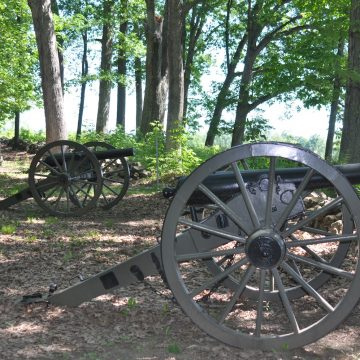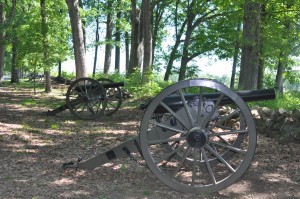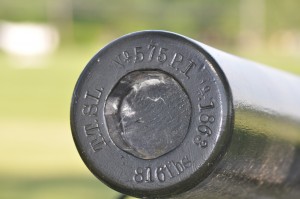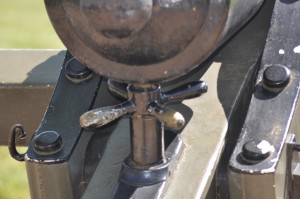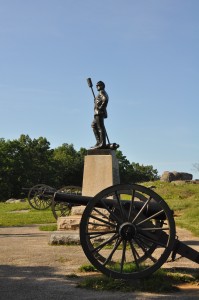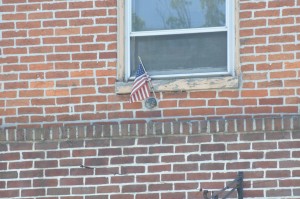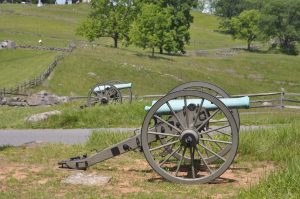KN, p. 55 “Murder During the Civil War.”
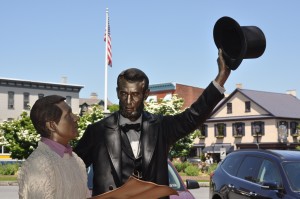 It’s Summer and for us that means road trips to nearby American battlefields to learn about our military history or to watch a reenactment. New Jersey has plenty of battlegrounds because of the Revolutionary War, but since I have more time on my hands these days, we decided to drive to rural Pennsylvania, to the area where the bloodiest battle of the Civil War was fought over 150 years ago – Gettysburg.
It’s Summer and for us that means road trips to nearby American battlefields to learn about our military history or to watch a reenactment. New Jersey has plenty of battlegrounds because of the Revolutionary War, but since I have more time on my hands these days, we decided to drive to rural Pennsylvania, to the area where the bloodiest battle of the Civil War was fought over 150 years ago – Gettysburg.
We discovered at the Visitor’s Center that there were over 50,000 casualties in the three days of Gettysburg, more than the entire population of our hometown in New Jersey. The records also show that of the 600,000 + who died during the four years of the Civil War, 520 were murdered. The totals are staggering, but the fact that murders were counted separately tells me that someone was trying to follow the law during the war, even though standards for justice were not the same in the 1860s as they are now.
Motives for murder have not changed: greed, love, revenge. But, what would be considered murder now, might have been accepted as ‘he had it coming,’ back then. Tons of western movies (and history books) tell us that if a man caught a thief stealing his horse in the mid 19th c., nobody would have blamed him for shooting the culprit dead in his tracks.
Keeping that in mind, after looking at a couple of pamphlets from the Visitor Center gift shop, I’m suspicious about that official Civil War murder count. I read:
*The Union and Confederacy viewed acts of war differently. The North considered Sherman’s burning of Atlanta acceptable. Southerners thought it criminal.
*Officers needed in battle, got away with killing fellow officers. Confederate Gen. Marmaduke killed Gen. Walker in an illegal duel, but only spent a few hours in jail.
*The side holding the upper hand wrote, interpreted, and enforced the law. Henry Wirz was convicted of crimes/murders committed at Andersonville, but similar offenses at a Northern prison were ignored at the end of the war.
Setting aside the appalling conditions at the P.O.W. camps that caused the deaths of thousands, the murder count is probably off.
*Source: www.civilwarhome.com
*Source: Buhk, Tobin T., “True Crime in the Civil War” Mechanicsburg, PA: Stackpole Books, 2012.
*Photo by Patti Phillips
KN, p. 55 “Murder During the Civil War.” Read More »

